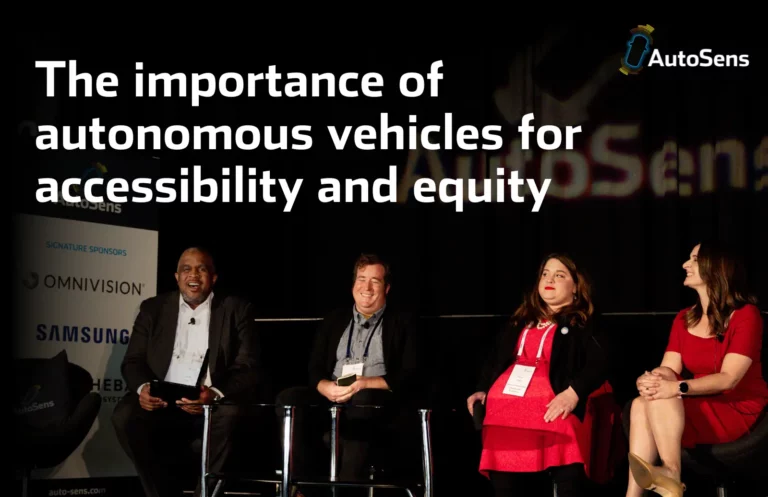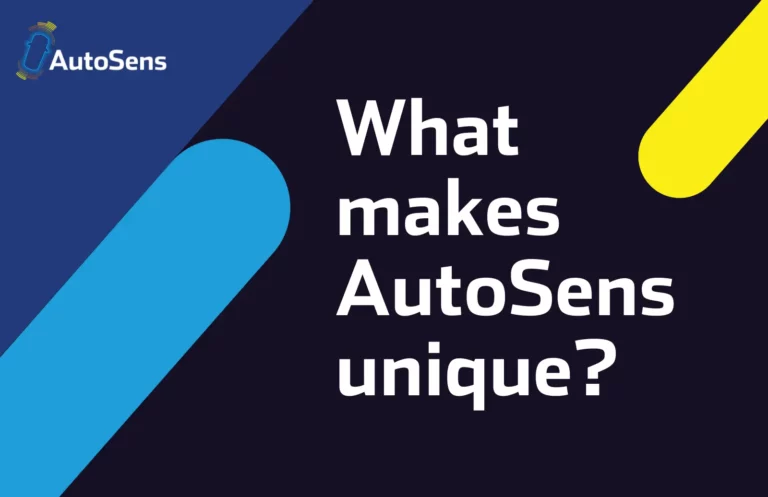Velodyne LiDAR are joining the AutoSens family in Brussels 2018. We caught up with Erich Smidt, Managing Director at Velodyne Europe GmbH. He gave us some great insight into Velodyne LiDAR and their future, the next big opportunity for LiDAR and the importance of simulation for testing and validation.
How do you describe your company to a new connection?
Founded in 1983 and headquartered in Silicon Valley, Velodyne is a technology company known worldwide for its real-time 3D LiDAR computing and software platforms. The company evolved after founder & inventor David Hall developed the HDL-64 Solid-State Hybrid LiDAR sensor in 2005. Since then, Velodyne LiDAR emerged as the unmatched market leader of real-time 3D vision systems used in a variety of commercial applications, including autonomous vehicles, vehicle safety systems, mobile mapping, aerial mapping, and security. We offer a unique variety of products for every application: from sensors with a 360-degree all-round detection and up to 300-meter range to the coming solid-state LiDAR technology, which enables embedded integration. Our employees combine the competence of long-lasting LiDAR experience with the spirit and dynamics of a truly innovative company. We all live the company motto: Driving the Autonomous Revolution.
There is a lot of activity in the LiDAR market with start-ups, M&A activity and lots of innovation, where does Velodyne sit in all of that?
There is indeed a lot of movement in the LiDAR market, and if you compare the situation nowadays with that only five years ago, you see some new players have arrived on the scene. Although mostly smaller start-up’s, they for sure enrich the technological landscape of the sensor industries.
However, we at Velodyne are more than confident about our future development. Coming up with a nice technological approach is one thing – to sustainably grow your business idea into a real industrial enterprise which reliably fulfils the demands of clients such as the top automotive OEM’s and globally acting Tier-1 companies, that’s a completely different story.
In that sense we are pretty much ahead, Velodyne LiDAR is the only company on the market that already has its own extensive industrial production capacities to produce automotive-grade 3D-LiDAR sensors in enormous quantities in a short time at market-driven prices, and thus we have the flexibility to meet the demand of our customers.
We know ADAS and autonomous vehicle development represents such a good opportunity, but which other sectors see the potential in LiDAR?
We at Velodyne LiDAR have a long history of exciting and sustaining business relationships into a wide range of industries. Our real-time 3D vision systems contribute to a lot of industrial solutions in a variety of different fields of applications such as in mining, security, defence, robotics, industrial automation, drone applications, classical mapping, indoor & outdoor logistics, and much more.
Think only about future Smart City solutions. We see, for example, a lot of demand for advanced 3D-LiDAR traffic intersection surveillance as part of future Smart City concepts, and currently some interesting integrator solutions are coming onto the market using our sensors.
What can we learn from these other applications that we can apply for ADAS and autonomy?
In daily business you serve many clients from non-automotive areas, who come up with ideas for new applications, sometimes never ever thought of before. Think about automatic steering of huge gantry cranes, for example.
The same 3D LiDAR sensors being utilized in automotive vehicles to generate 3D maps/images in real-time traffic environments, can be used for fully automatic crane handling to unload bulk material from big cargo ships. These same sensors provide wide area coverage and may be utilized to automate ports to load and unload bulk material like coal or iron ore, or even as well containers from ships to trucks. Three-dimensional LiDAR sensors provide better, faster measurement data which is easier to model in a more productive way. Current conveyor transfer equipment does not optimize the space in the cargo hold because the sensors have a limited view of a bulk pile or of a bunch of containers. Three-dimensional LiDAR sensors are changing automation’s best practices in material ship transfers by offering a complete spatial view. On the other hand, with these kinds of applications you also can reach the limits of what’s reliably doable, such as in terms of accuracy or intensity for detection of special objects. The experience you gain from such projects help you in future R&D work to further improve the product line, thus creating benefit also for future sensors mainly addressing automotive applications.
Just look at our latest sensor introductions like the VLS-128 and the Velarray, and you will get a sense of what we mean with that.
How do you feel the industry can help resolve the shortage in training and recruitment?
The industry has identified the major gaps in the training and recruitment of qualified technical personnel for all the Autonomous Vehicle related disciplines. Through the reputable professional organizations like SAE International, consisting of engineers and serving engineers, dedicated training programs have been developed and are offered along with technical publications, standards, and conferences/events to raise the level of competence in the field. Velodyne LiDAR has participated in many joint technical development programs with SAE International to support the Autonomy field, including the most recent AutoDrive Challenge.
How important is simulation for testing and validation, and how do you work with simulation vendors?
With increasing deployment on autonomous vehicles, LiDAR sensors have to be subjected to a rigorous test and validation process. Unlike other competitors, in addition to using external vendors, Velodyne LiDAR has significantly invested in full capability in-house for the Hardware and Firmware Validation process, including the most challenging corner cases, and certainly the typical SAE, IEC, ISO or OEM/Tier 1 driven test schedules at the component or vehicle system level. The current capabilities include HAST, HALT, Temperature shock and cycling, Mechanical Shock, Vibration, EMI/EMC/ESD testing, FW validation per ISO26262, and a small fleet of vehicles for on-road sensor testing under the harshest environmental conditions.
We are in discussion with many simulation vendors as it is important to address the model requirements on both sides- on the sensor front end, but also on the environmental side. The sensor model itself is already a challenge in order to achieve a physical model. The environmental simulation needs to be able to provide certain information, too. It is not an easy task, but we are working on simulation as OEMs do need it for their MIL, SIL and HIL frameworks.
Do we need standards for LiDAR technologies, to align performance KPIs and help comparison between different LiDAR technologies?
At the present time, the key is standardization at the AV requirements and performance level, which then can drive objective requirements at the subsystem and the component level. Velodyne LiDAR is deeply involved with these initiatives, including the direct participation in AV Standards development though SAE International.
What will attendees at AutoSens lean about when they meet you?
Purpose of the presentation we have prepared for the event is to discuss the opportunities for component level test and validation, specifically automotive LiDAR, in the context of the broader requirements at the vehicle level. The audience will learn about Velodyne’s efforts to cover all the aspects of the rigorous automotive validation process, including the disciplined approach toward product, process development and manufacturing as required by the ISO 9001:2015, IATF16949 and other quality management systems standards.
What are you hoping to achieve as a business this year?
Velodyne will continue to play a key role in supporting our Automotive OEM customers and Tier-1 partners in their development of autonomous vehicles. We will see some great things happening in the autonomous world in the coming year and Velodyne will be a part of it.
Come and meet Velodyne LiDAR at AutoSens in Brussels this September. The company will be represented by the Chief Quality Officer Dr. Mircea Gradu, who is also current President and Chairman of the Board of SAE International. Tickets are going fast >>






